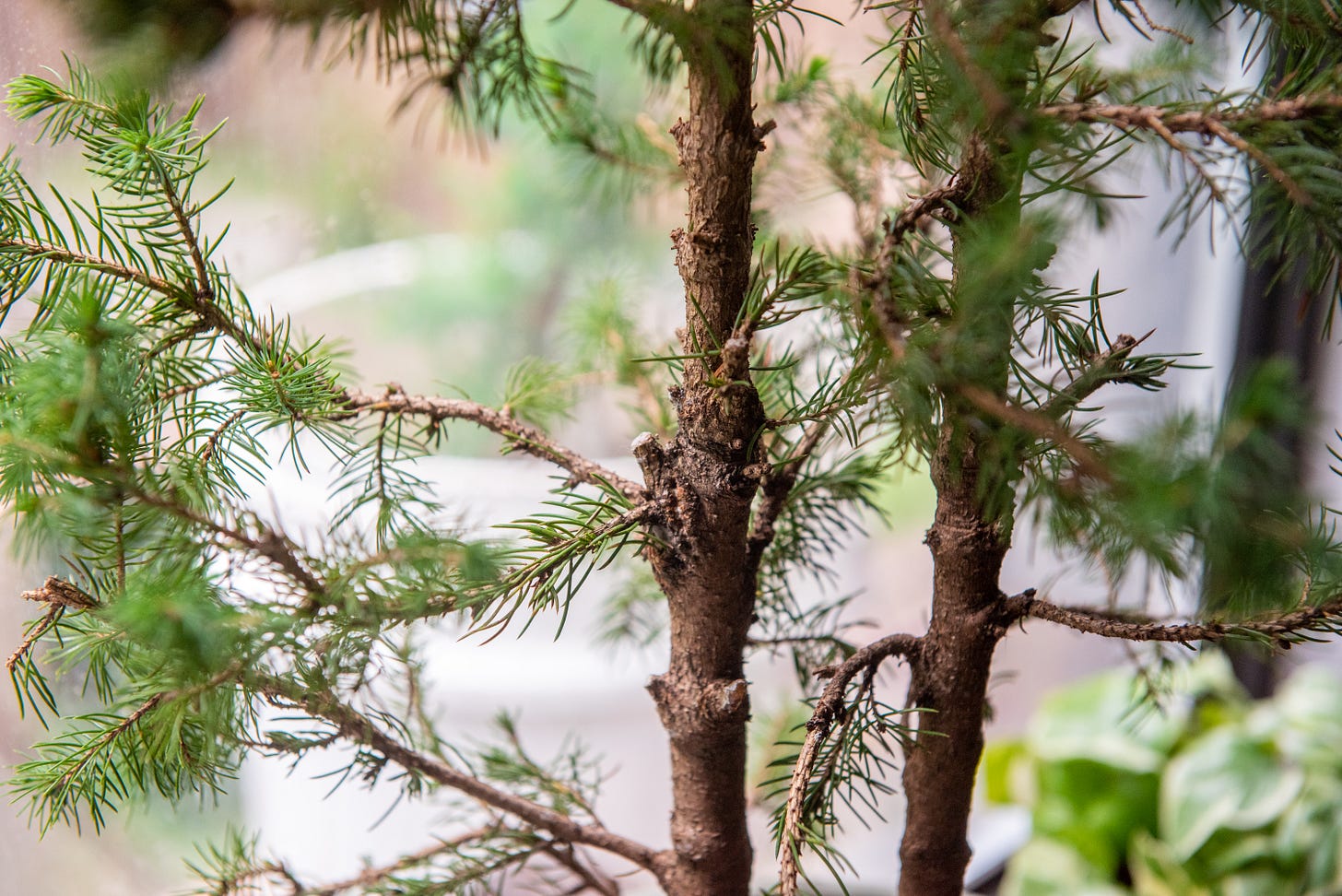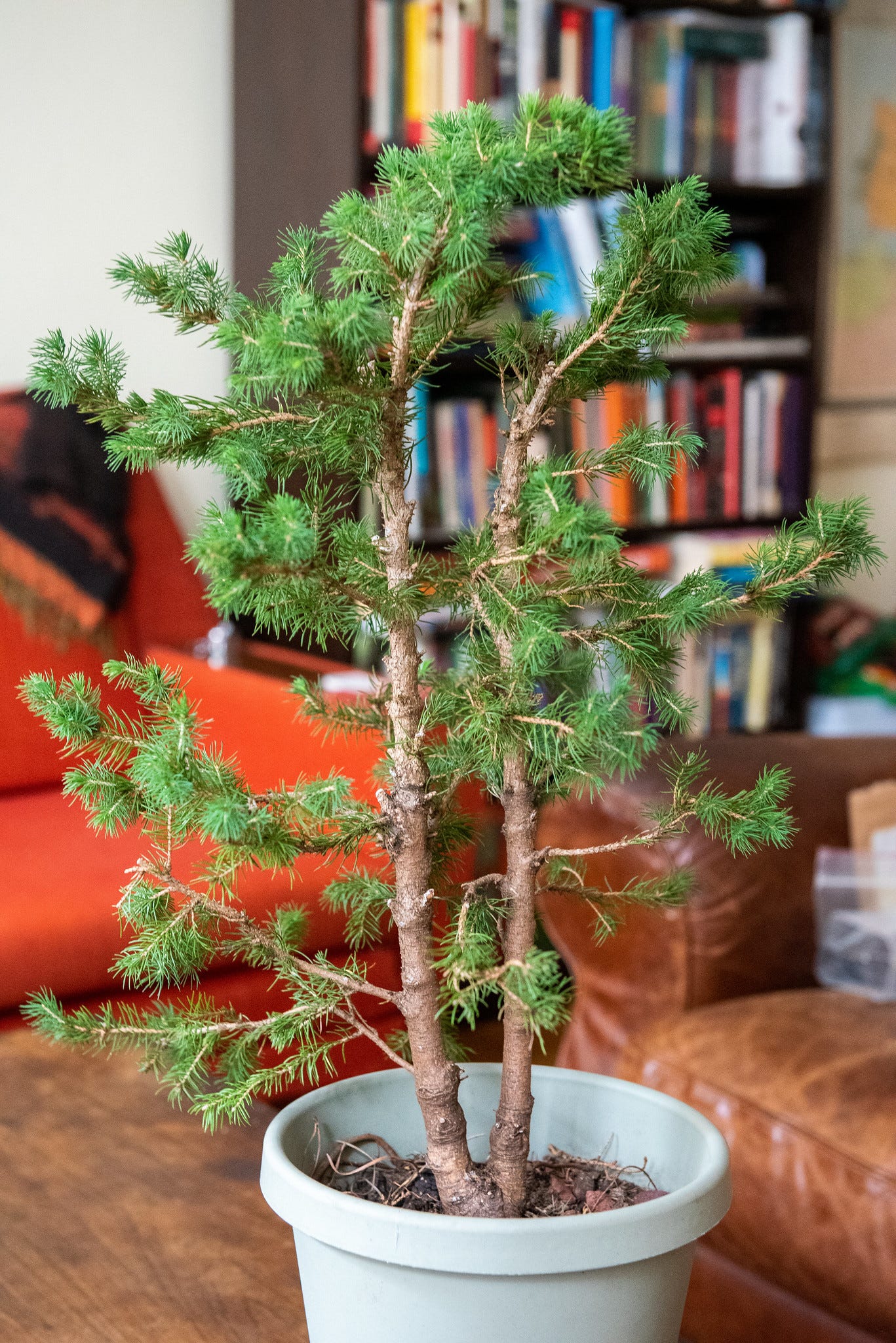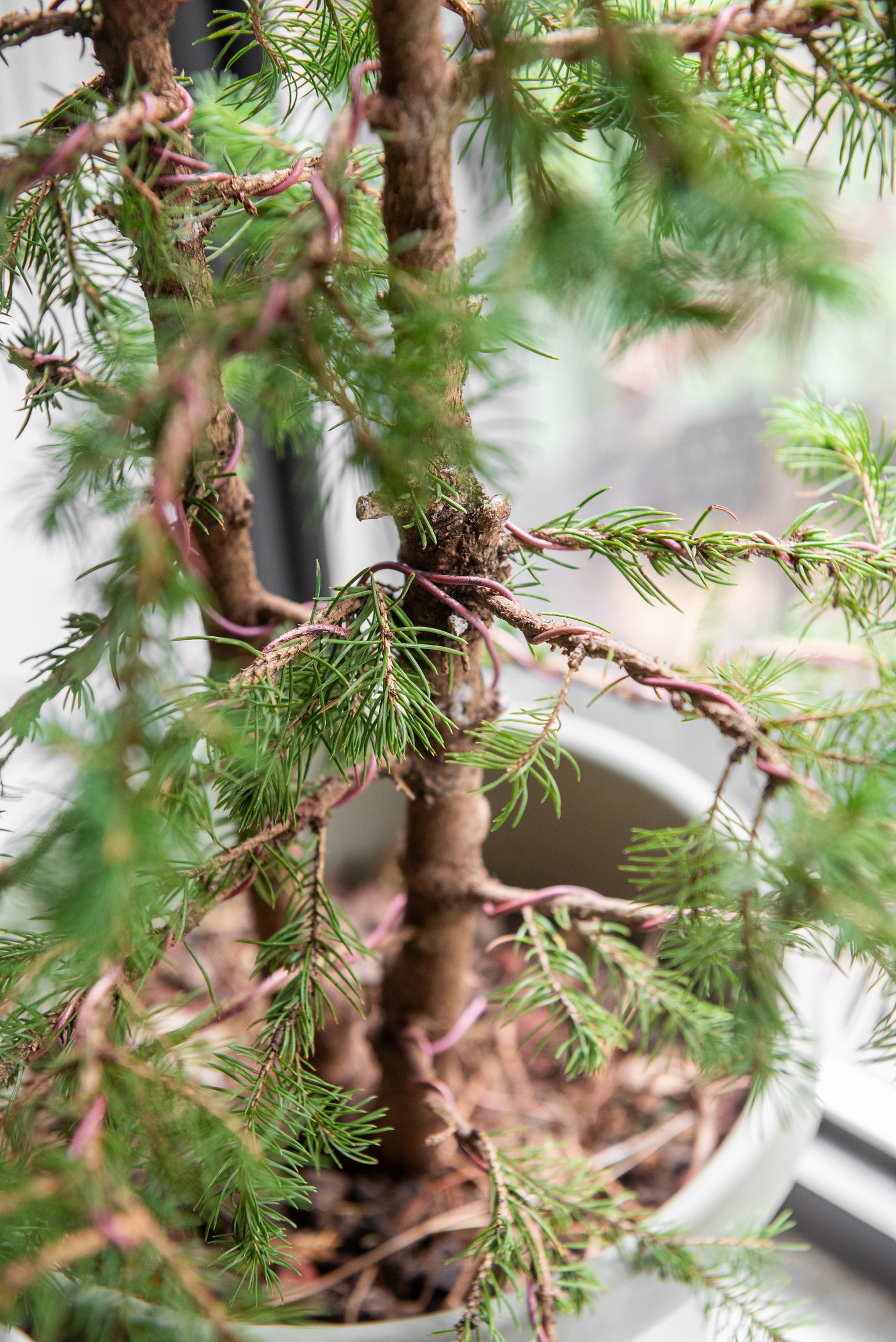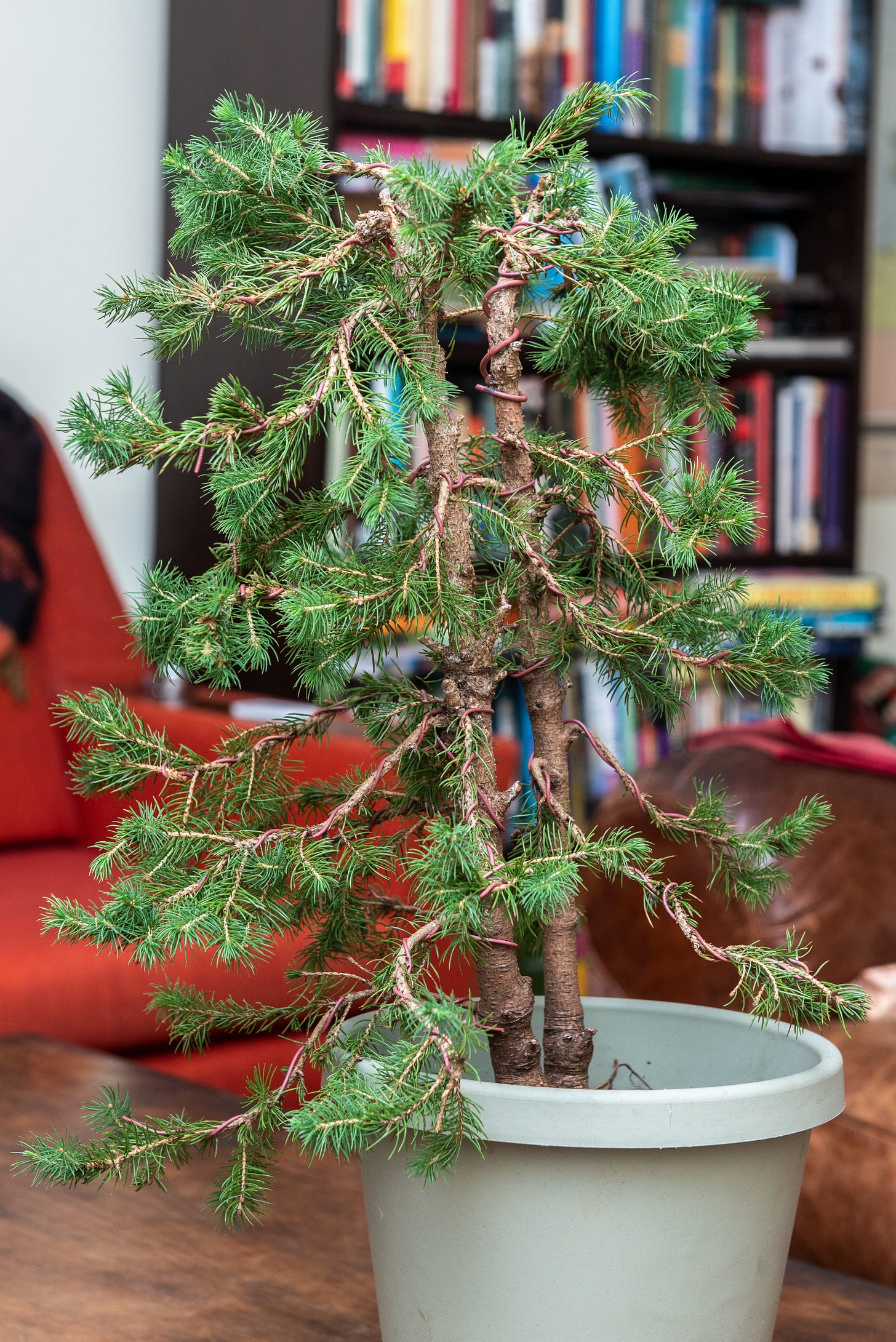Sprucing up a spruce
Wiring a new perspective, considering the abyss.
This white spruce is the oldest surviving tree in my collection, back from when I was just beginning to learn about bonsai last year. It’s not the first tree I ever bought, but it’s the first piece of nursery stock that I “styled,” and by virtue of keeping it alive for a while—mainly by giving it good sun and leaving it the hell alone—I’ve been able to learn a lot from it. Not too shabby for a $20 purchase.
Many bonsai people consider white spruce a frequent beginner’s error. It’s commonly used for Christmas trees, so it’s easy to buy stock with thick trunks for not much money towards the end of the year. But it’s tricky for bonsai training. Spruce doesn’t bud on old wood easily, so it’s difficult to build ramification. The flexible branches have a tendency to spring back into their natural state even after months of wiring.
I’m treating this tree as practice fodder. I doubt it’ll ever become anything beautiful, but if you hold off working on a tree until you feel like you know enough, you’ll never actually start. Now I know a little more about what I’m doing, and I have some better bonsai wire, so it’s time to re-wire this tree and consider its future.
Here is the tree with its old [chaotic, amateurish, garish] wire removed.
The general idea with two-trunk trees is that one trunk should clearly be dominant, with the second acting as support to create a single composition. “Mother and child” is a common name for the design. The left trunk here is thicker with more branches, but not enough to make it look like a mother trunk. Instead, I’m stuck with fraternal twin trunks, one of whom is beefier than the other, but not in a way that looks pleasingly asymmetrical.
For while I’d considered chopping the thinner trunk about halfway to make an exposed spike of deadwood. If I had any lower branches on that side to work with, I’d try it, balancing the broken trunk with a prominent thick branch to form a neat triangular composition. But my best candidate for a powerful branch is more than halfway up the trunk. The design would look ungainly.
As I wired my way up the tree, I considered my options. You’re supposed to wrap wire at a 45 degree angle to a branch, using a single piece of wire to wrap two nearby branches. This optimizes your bending power and lets you use the tension between the two branches to hold each other into shape. Wiring involves a lot of rotating a tree to reach all the branches. Then you step back and take a look. Add some bends. Step back again. Spin the tree around. It’s an intimate time, you and your tree with your hands covered in its sticky spruce sap. It’s also—and yes, I know how this sounds—existentially unsettling. You are holding the wire. You will determine this tree’s style and health over the next several months. There’s nowhere to hide; if you screw up, the screwup is yours alone. A chasm opens beneath you, a yawning vertiginous abyss that echoes your essential smallness. You peer downward, hoping to find direction in the darkness. A lonely ache of responsibility creeps across your shoulders.
I love it.
After gazing into the abyss for a while, I put on some Trent Reznor and returned my attention to the tree.
As I spun the tree in my hands, it occurred to me that most of my problems stemmed from what I had previously decided was the front of the tree—the viewing angle that you build a design around. That angle for two-trunk trees is usually full frontal, to keep both trunklines in full view. But there’s no reason you have to stick to that convention.
With this new front, the thicker trunk is slightly in the foreground, creating a forced perspective that makes the thinner trunk look like it’s stretching back into the distance. I’m envisioning a tree on a rocky outcropping on the edge of a forest. The dominant trunk, exposed to greater sunlight, leans boldly over a bluff and embraces the open air. The subordinate trunk hangs back, clinging to the security of the forest. When I repot this tree in the following spring I’ll position the dominant trunk so it looks more like it’s ready to leap into the abyss.
It’s miles from anything close to presentable, but I think it’s an improvement. The tree used to be staid and symmetrical. Now there’s some tension and drama.
You may think I’m saying that a fresh perspective can transform your view of a project. I think that’s true, but it’s not the intended moral here. What I really mean to say is that existential horror is good for the soul now and again. Embrace it.
Tree reading
A good dispatch about trees’ role in cooling down cities during heat waves, and how racist redlining from the 1930s and ‘40s left a lasting disparity in the canopy coverage across the city. [Gothamist]
A new census of America’s city trees shows that neighborhoods which are predominantly home to people of color have 33% less tree coverage than nearby majority-white neighborhoods. The researchers estimate 30 million trees are necessary to close the gap. [The Guardian]





Good idea on shifting the front. Looking at it, I was considering how easy it would be to slowly bend the trunk of the smaller tree into a more cascading style, but that may end up looking odd and then you've got a really bent trunk and you have to either split the trees, or find some other solution.